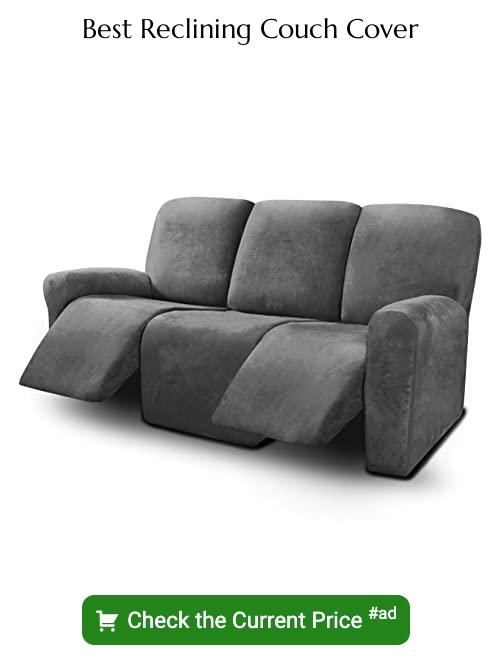Last updated on
Discover the most effective ways to conceal the back of your reclining couch, transforming it into a stylish and seamless addition to your living space.
Are you tired of staring at the unsightly back of your reclining couch? Perhaps it’s time to give your living room a much-needed makeover. A reclining couch is undoubtedly comfortable, but its back can be an eyesore that ruins the overall aesthetic appeal of your space.
Fortunately, there are several ways to hide the back of a reclining couch and make it blend seamlessly into your decor. In this article, we’ll explore some creative ideas that will help you conceal the back of your reclining couch and transform your living room into a stylish haven.
So, let’s dive in!
Table of Contents
Selecting the Right Furniture Cover
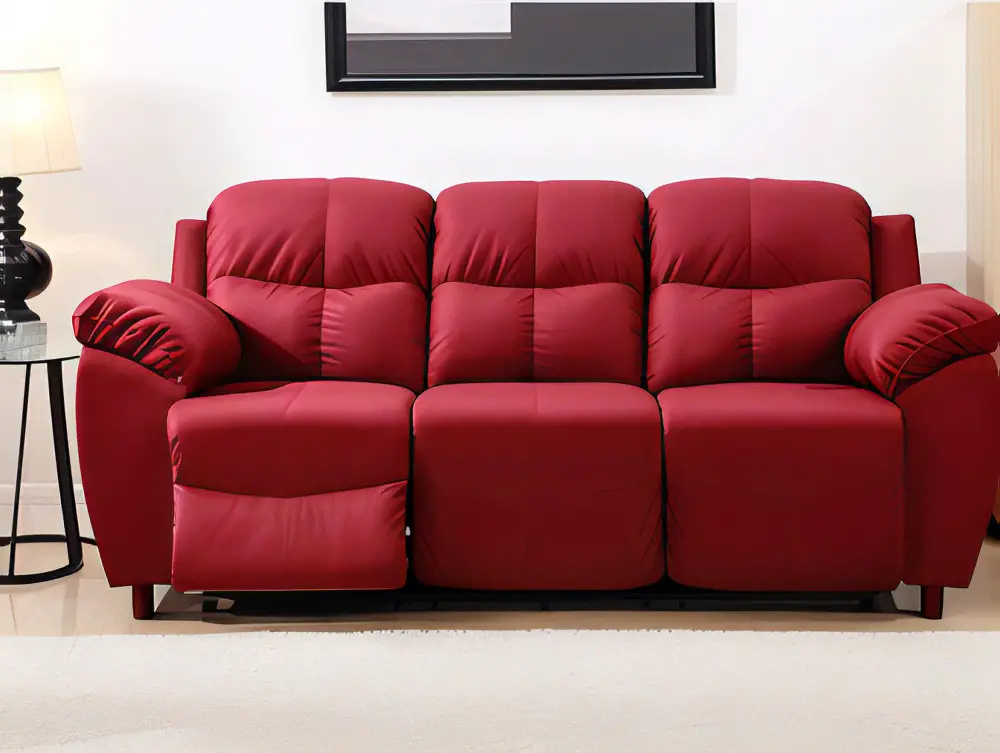
A well-fitted cover not only conceals unsightly upholstery but also protects your sofa from spills and stains. Before purchasing a furniture cover, measure your reclining couch’s dimensions carefully to ensure that you get a perfect fit.
Look for covers made of durable materials such as cotton or polyester blends that are easy to clean and maintain.
You may also want to consider slipcovers with unique designs or patterns that complement your decor style while covering up any flaws in the back of your sofa. Slipcovers come in various styles, including one-piece covers or separate pieces for each cushion on the seat and backrest.
Another option is custom-made slipcovers tailored specifically for reclining sofas with built-in footrests and headrests. These types of covers provide full coverage while still allowing you access to all functions on your couch.
DIY Sofa Slipcovers
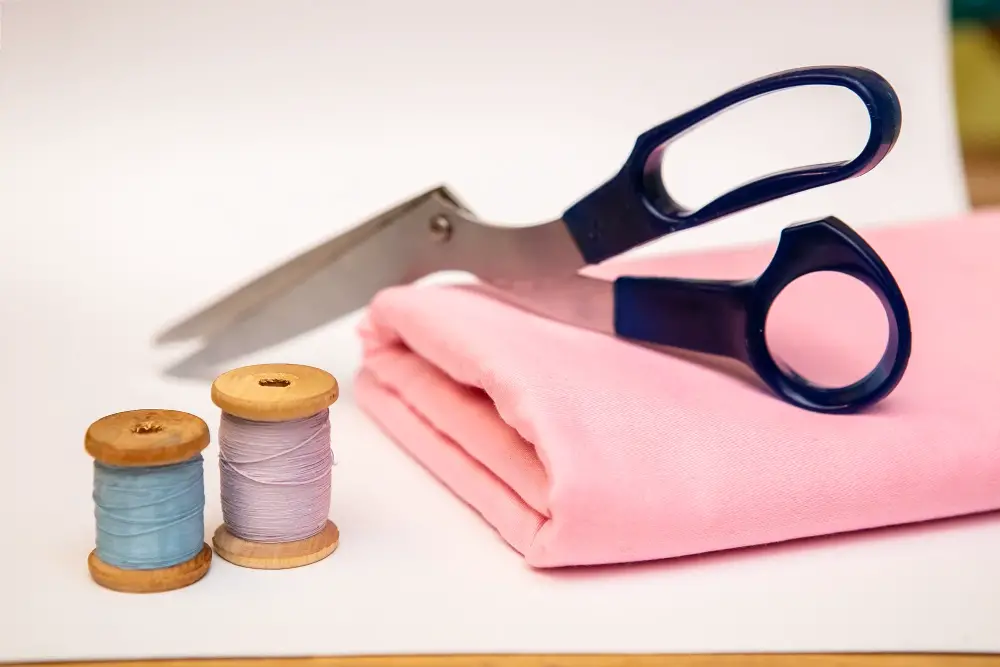
You can create custom-made covers that fit perfectly over your couch and give it a fresh new look. All you need is some fabric, scissors, and basic sewing skills.
To make a slipcover for your reclining couch, start by measuring the dimensions of the backrest and seat cushions. Then cut out pieces of fabric according to those measurements with an additional 2-3 inches on each side for seam allowance.
Next, sew together all sides except one long edge using either a sewing machine or hand stitching if preferred. Turn right side out before placing it over the backrest or cushion area where needed – this will ensure that any seams are hidden from view once in place!
Using a Sofa Table
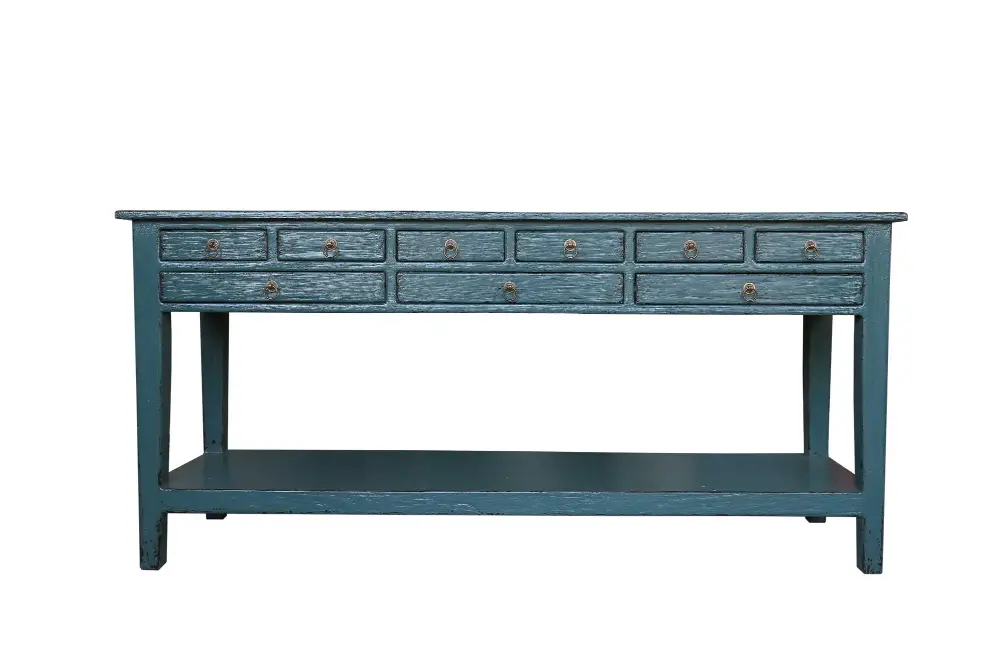
It’s an excellent option for those who want to add some style and functionality to their living room. A sofa table is typically placed behind the couch, providing a surface for decorative items such as lamps, picture frames, or books.
When selecting a sofa table, consider its height and width carefully. The height should match that of your reclining couch so that it doesn’t look out of place or awkwardly positioned in relation to the rest of your furniture.
The width should also be proportional; otherwise, it may appear too small or too large.
Adding a Console Table
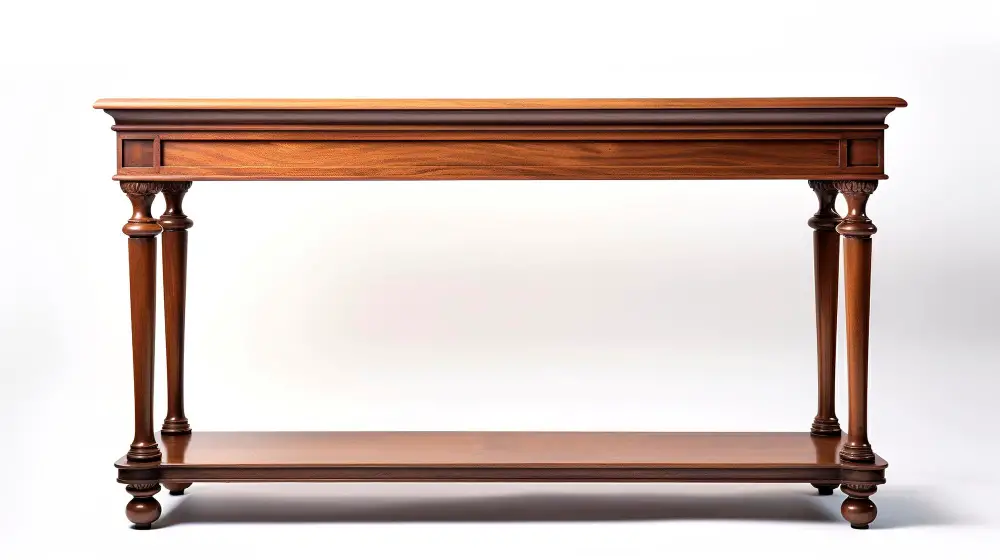
You can place it behind the sofa, and it will create a visual barrier between the back of your couch and any other furniture or wall. A console table with drawers or shelves can be used to store books, magazines, remote controls, and other items that you want within reach but don’t necessarily want on display.
When selecting a console table for this purpose, make sure that its height matches that of your reclining sofa’s backrest so that they appear as one cohesive unit. Consider choosing one with an open base design if you have limited floor space in your living room.
Utilizing Storage Furniture
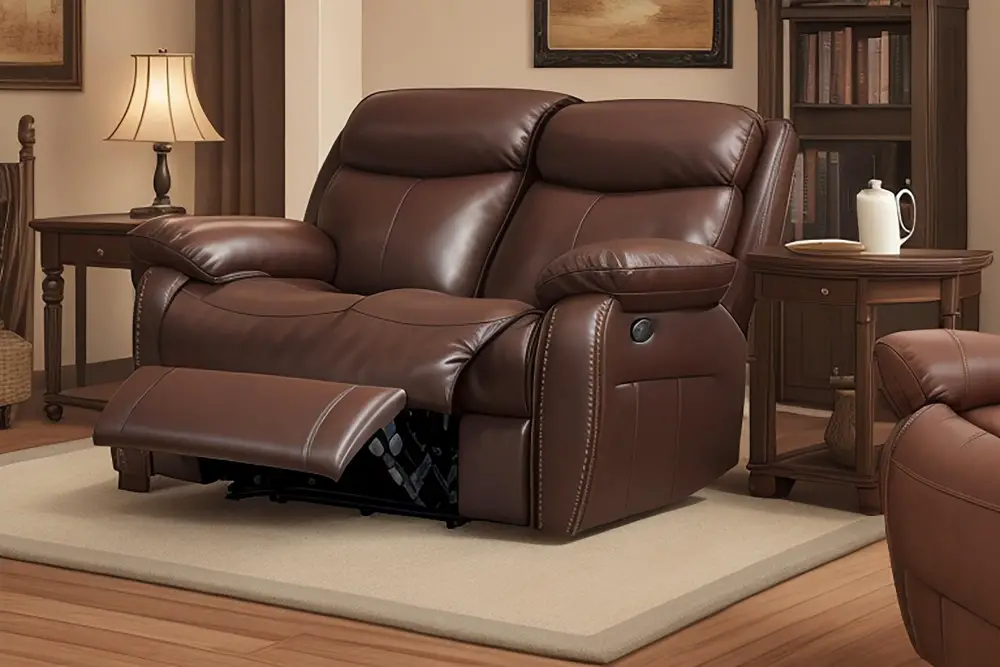
Not only will it conceal the unsightly back, but it will also provide additional storage space in your living room. Storage furniture comes in various forms such as cabinets, bookshelves or even ottomans with hidden compartments.
A bookshelf placed behind a reclining couch can serve as an excellent backdrop while providing ample space to store books and decorative items. You can also use cabinets with doors that blend seamlessly into your decor style and keep clutter out of sight.
Another option is using an ottoman with built-in storage that doubles up as extra seating when needed. This type of furniture is perfect for small spaces where every inch counts.
When selecting storage furniture to conceal the back of your reclining couch, ensure that its height matches or exceeds that of the sofa’s backrest so it completely covers it from view.
Incorporating a Bookshelf
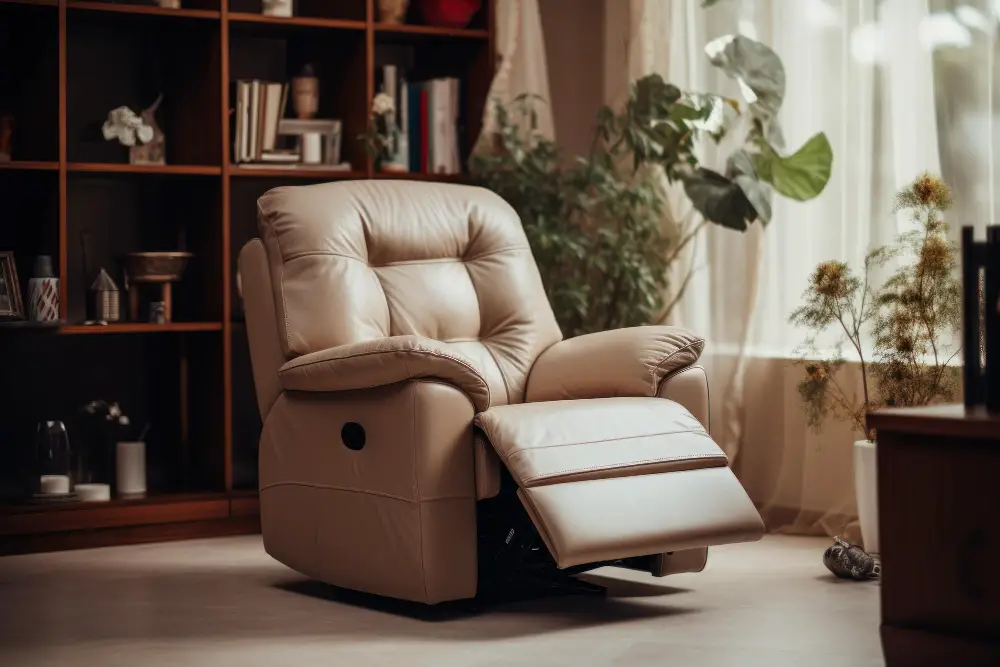
By placing a bookshelf behind your sofa, you not only conceal the unsightly back but also create additional storage space for books, decorative items, and other essentials.
When incorporating a bookshelf into your living room decor, consider its size and style to ensure it complements the rest of your furniture. A tall and narrow bookcase can work well in small spaces while providing ample storage space.
On the other hand, if you have more significant square footage to work with or want to make more of a statement with this addition – opt for larger shelves or even built-ins.
You could also use open shelving units that allow light through them; this will help keep things feeling airy while still concealing any unwanted views from behind!
Incorporating a stylishly designed shelf unit will add depth and dimensionality to any room by creating visual interest on multiple levels- both horizontally across each shelf level as well as vertically up towards ceiling height where taller objects like vases or sculptures might be placed atop lower stacks such as books themselves!
Hanging Curtains
Curtains can add a touch of elegance and sophistication to your living room while also hiding any unsightly areas behind the couch. When hanging curtains, make sure they are long enough to reach the floor and wide enough to cover both sides of the reclining sofa.
You can choose from various curtain styles, including sheer or opaque fabrics, depending on how much light you want in your space. If you prefer natural light during daytime hours but still want privacy at night, consider layering sheer curtains with heavier drapes that can be drawn closed when needed.
When selecting colors for your curtains, opt for shades that complement or contrast with other elements in your living room decor such as throw pillows or area rugs. Hanging patterned drapes will also add texture and visual interest while concealing any unwanted views behind a reclining sofa.
Installing Decorative Screens
These screens come in various designs, materials, and sizes that can complement any decor style. You can choose from wooden or metal frames with intricate patterns or opt for a more modern look with geometric shapes and bold colors.
Installing decorative screens is easy; you only need to place them behind the couch against the wall. They provide privacy without completely blocking off space, making them perfect for small apartments where every inch counts.
Moreover, decorative screens serve as versatile pieces of furniture that can be used in different ways beyond hiding unsightly areas like the back of a reclining sofa. For instance, they make excellent room dividers when placed perpendicular to walls or create cozy nooks when positioned at angles.
Implementing a Room Divider

Room dividers come in various styles and materials, from traditional wooden screens to modern metal partitions. They can be used not only as decorative elements but also as functional pieces that create separate zones within an open-plan living space.
A room divider is an excellent option if you want to add privacy or divide your living area into different sections without compromising on style. You can choose from different designs and sizes depending on the size of your space and how much coverage you need.
For instance, if you have a large living room with high ceilings, consider using tall bookshelves or cabinets as dividers. These will provide ample storage while creating distinct areas for lounging or dining.
Alternatively, if you prefer something more lightweight and portable than furniture pieces like screens are perfect options that allow flexibility in terms of placement around the house.
Placing Tall Plants
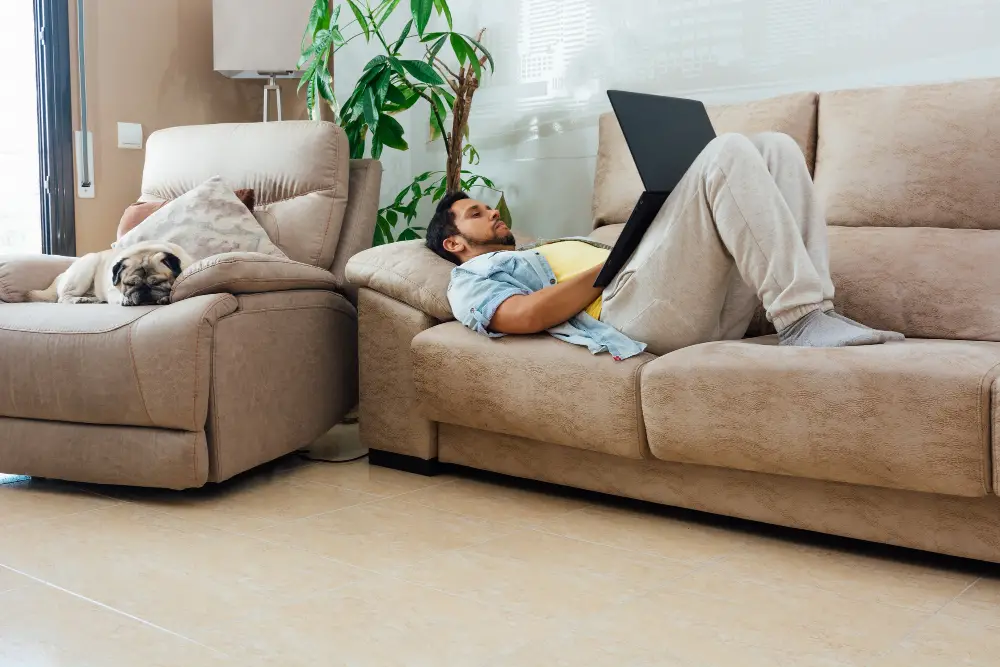
Not only do they add a touch of greenery to your living space, but they also create an illusion that there’s more going on in the room than just a sofa. You can choose from various types of indoor plants such as fiddle leaf figs, snake plants, or rubber trees that grow tall and bushy.
Tall potted plants are perfect for filling up empty corners or spaces behind furniture pieces like reclining sofas. They help break up large areas and make them feel cozier while adding texture and color to your decor scheme.
When selecting which plant species you want to use for this purpose, consider factors such as lighting conditions in your home and how much maintenance each type requires. Some indoor plant varieties thrive in low light environments while others need plenty of sunlight exposure daily.
Incorporating Floor Lamps

They can be used as task lighting for reading or as ambient lighting to create a warm and inviting atmosphere. When it comes to hiding the back of your reclining couch, floor lamps can be strategically placed behind the sofa, illuminating the space while also concealing its back.
To achieve this look, consider placing two identical floor lamps on either side of your reclining couch. This will not only provide ample light but also create symmetry in your living room design.
Alternatively, you could place one large floor lamp directly behind the center of the sofa for a more dramatic effect.
When selecting a floor lamp for this purpose, choose one with an adjustable arm or shade that allows you to direct light where it’s needed most without shining directly into anyone’s eyes while they’re seated on the couch.
Layering Rugs and Runners
This technique involves placing one rug on top of another or layering a runner over an area rug. The key is to choose rugs that complement each other in terms of size, pattern, and color.
For instance, you can place a large area rug under the front legs of your reclining couch and then layer it with a smaller accent rug at an angle behind the sofa’s backrest. Alternatively, you can use two identical runners placed side by side along the length of your reclining couch.
When selecting rugs for layering purposes ensure they are not too thick as this may cause tripping hazards or make furniture unstable when placed on them. Also consider using non-slip pads underneath each piece so they don’t slide around easily.
Creative Wall Art
A large piece of artwork or a gallery wall can draw attention away from the back of your couch and add visual interest to your living room. You could also consider hanging a tapestry, quilt, or rug on the wall behind your sofa for an eclectic touch.
When selecting artwork for this purpose, choose pieces that complement the colors and style of both your couch and overall decor scheme. If you’re unsure where to start with creating a gallery wall, try using frames in different sizes but similar styles for cohesion.
Coordinating With Paint or Wallpaper
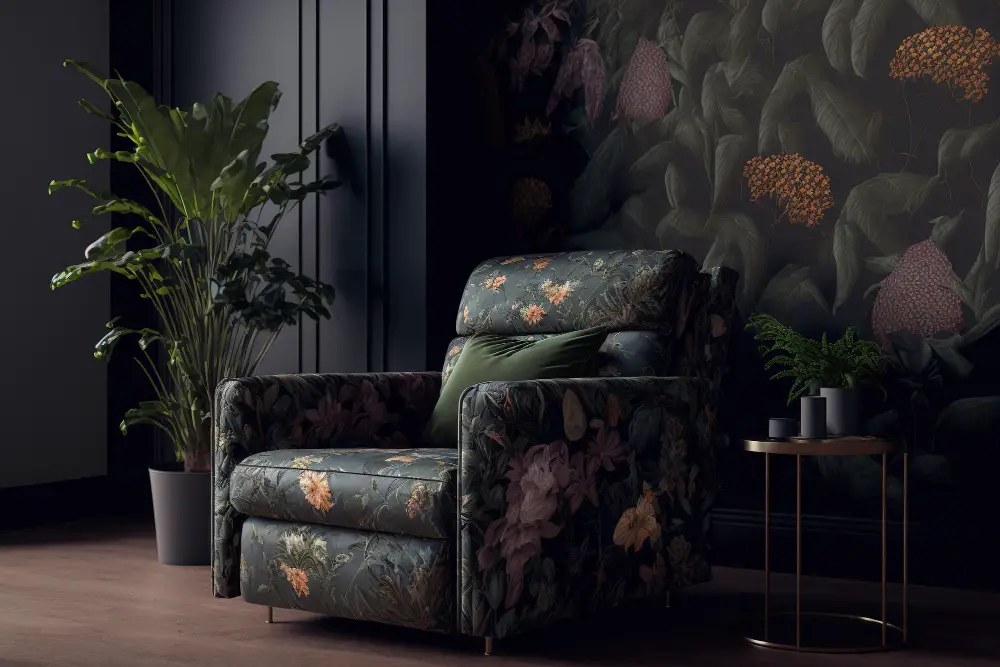
If you have a bold-colored reclining couch, consider painting the walls a neutral color such as beige, white, or gray. This will create balance and harmony in your space while allowing your couch to stand out as a statement piece.
On the other hand, if you have neutral-colored furniture and want to add some personality to space, consider using patterned wallpaper on one of the walls behind your reclining sofa. You can choose from various patterns such as stripes or floral prints that complement other elements in your living room.
Another option is creating an accent wall by painting it with a bold color that complements but doesn’t match exactly with any of the colors on our furniture pieces including our recliner sofa.
Rearranging Room Layout
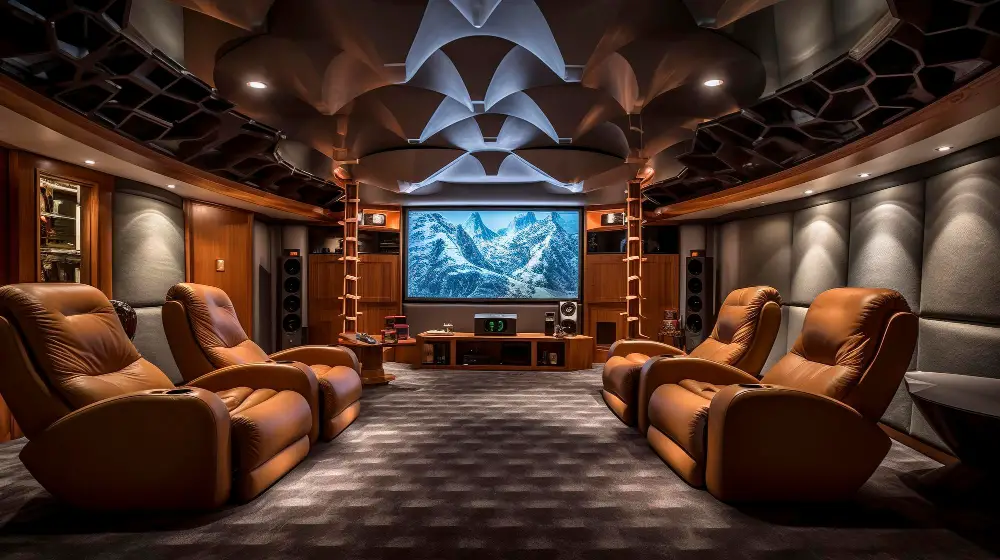
By moving furniture around, you can create a new focal point in the room and draw attention away from the back of your couch. Consider placing other pieces of furniture such as armchairs or coffee tables in front of it to break up its visual impact.
One popular option is arranging two identical sofas facing each other with their backs touching. This creates symmetry and balance while also hiding both sofa backs at once.
Another idea is to place a large area rug under all seating arrangements, including the reclining couch. The rug will help anchor all pieces together visually and make them feel like one cohesive unit rather than separate elements scattered throughout space.
Remember that when rearranging furniture, it’s essential not only to consider aesthetics but also functionality – ensure that there’s enough space for people to move around comfortably without bumping into anything or feeling cramped.
Back-to-Back Couch Layout
This arrangement involves placing two identical reclining sofas facing each other with their backs touching in the middle of your space. It’s an excellent option for those who love to entertain or have a big family as it provides ample seating and encourages conversation.
To make this layout work, ensure that there is enough space between the two couches so that people can walk around them comfortably. You may also want to add some accent chairs or ottomans to create additional seating options.
When it comes to decorating this type of setup, you can use decorative screens or curtains behind each sofa’s backrests for added privacy and visual interest. Alternatively, place a console table behind one of the sofas with lamps and decor items on top.
How Far Away From the Wall Should a Reclining Sofa Be?
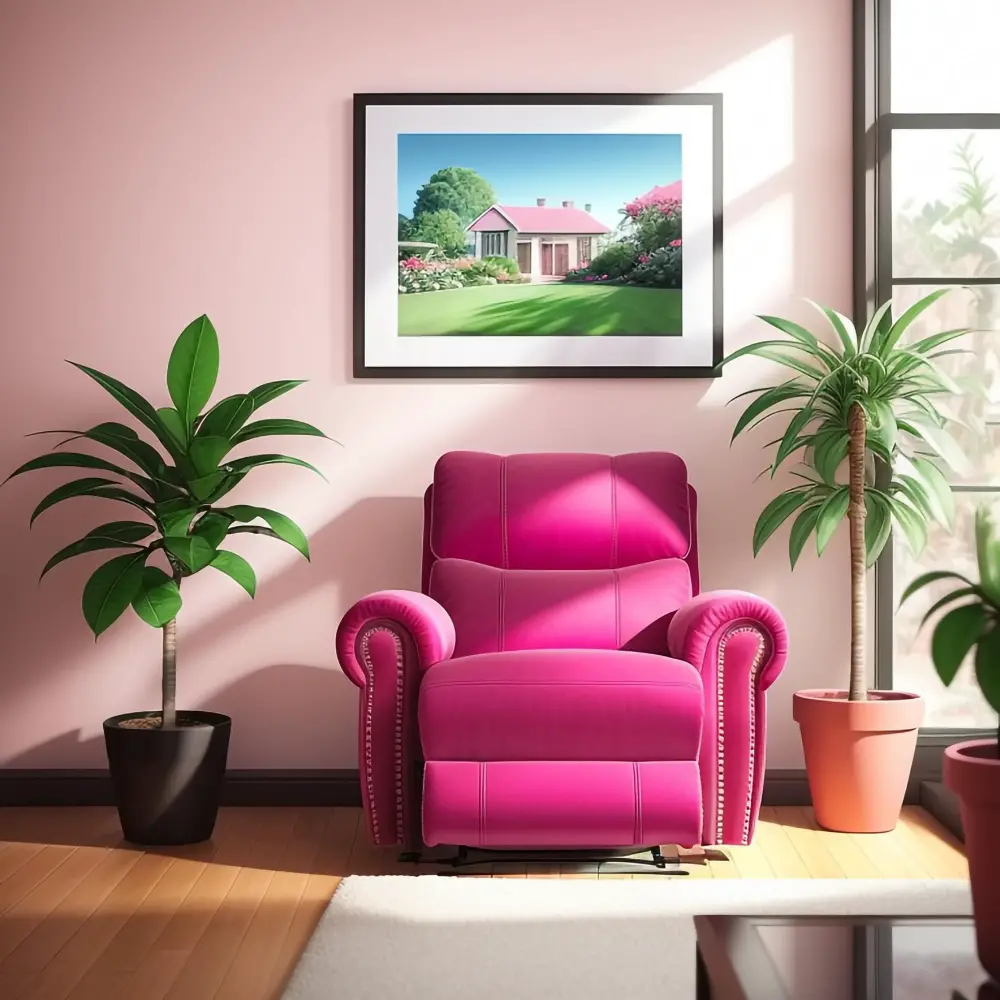
The ideal distance between your reclining sofa and the wall depends on several factors such as room size, furniture layout, and personal preference. Generally speaking, you should leave at least 3-4 inches of space between your sofa’s backrest and the wall to allow for easy movement when reclining.
However, if you have limited space in your living room or prefer a more snug seating arrangement with less walking area behind your couches then positioning them closer may be necessary. In this case make sure that there is enough clearance for people to walk around comfortably without bumping into anything.
Ultimately finding an optimal position for your recliner will depend on how much space you have available in addition to what feels comfortable while using it.
How Much Space Should I Leave Behind My Couch?

This will depend on the size of your living room and the layout you want to achieve. Generally, leaving at least 12 inches between your reclining couch and the wall is recommended for ease of movement around it.
However, if you have a smaller living room or prefer a more intimate seating arrangement, leaving less space may be appropriate.
It’s also essential to consider any other furniture pieces that will be placed behind or beside your reclining couch when determining how much space to leave behind it. For example, if you plan on adding a console table or floor lamp directly behind your sofa for additional storage and lighting options respectively; then make sure there’s enough clearance between them so that they don’t interfere with each other.
How Much Space Do You Need Behind a Reclining Couch?
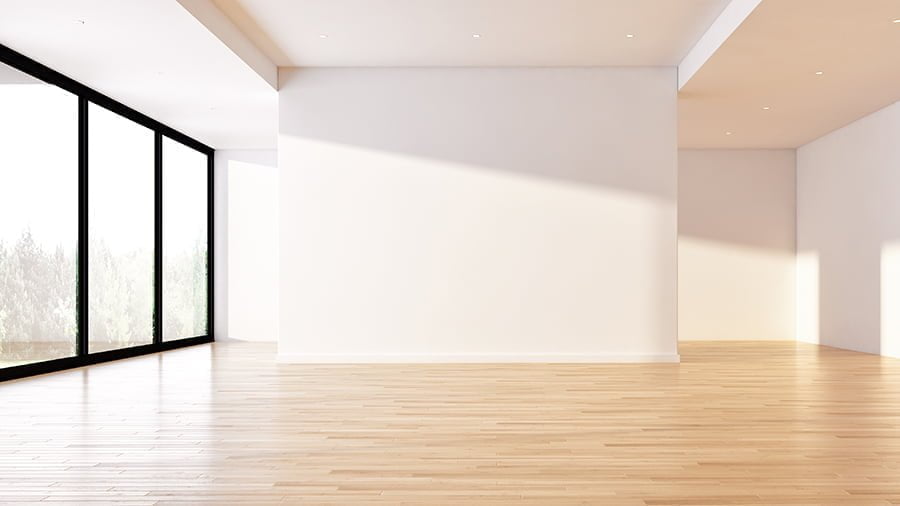
The answer depends on several factors, including the size of your room and the type of recliner you have. Generally speaking, a minimum clearance of 3 feet (36 inches) is recommended between the back of your reclining couch and any other furniture or wall.
However, if you have a larger room or want to create more walking space around your furniture arrangement, consider leaving up to 5 feet (60 inches) behind your sofa. This will give you enough room for foot traffic while still maintaining an open feel in your living area.
It’s also important to note that some manufacturers may recommend specific clearances for their products based on safety concerns or optimal performance. Be sure to check with them before making any final decisions about placement.
Ultimately, finding the right amount of space behind a reclining couch requires careful consideration and planning based on individual needs and preferences. By taking into account factors such as room size and manufacturer recommendations along with creative solutions like those outlined in this article – hiding unsightly backs can be achieved without sacrificing style or comfort!
FAQ
How to decorate behind a recliner sofa?
One way to decorate behind a recliner sofa is by hanging a tapestry on the wall and draping a throw blanket over the back for added warmth and color.
How can I make my reclining couch look good?
To make your reclining couch look good, add cushions and throw pillows for a more comfortable and inviting appearance.
Can you put a sofa table behind a reclining sectional?
No, a traditional sofa table cannot be placed behind a reclining sectional as it is incompatible with the reclining chaise.
What are some creative ways to utilize the space behind a reclining couch?
Some creative ways to utilize the space behind a reclining couch include placing shelving, creating a mini-library, adding a narrow console table, or displaying decorative items.
Are there any furniture pieces that can complement a recliner sofa and enhance the room’s aesthetics?
Yes, a stylish coffee table, side tables, or an area rug can complement a recliner sofa and enhance the room’s aesthetics.
How can I effectively use lighting to hide or accentuate the back of a reclining couch?
To effectively use lighting for a reclining couch, strategically place floor lamps or wall sconces to either create shadows behind the couch for hiding or illuminate the area for accentuation.
